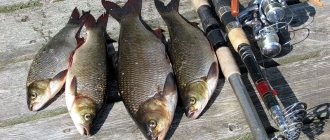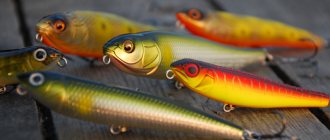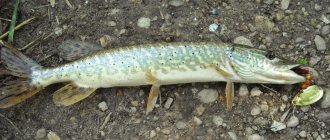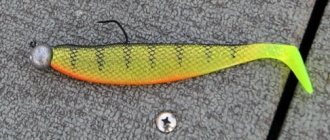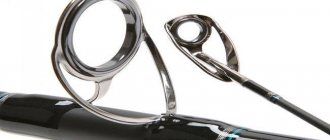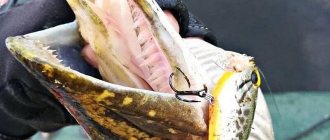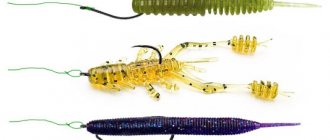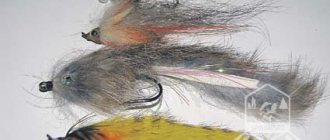Despite the variety of different fishing methods, spinning remains one of the most popular gear designed for fair competition with predatory fish. During the hunt for a predator, the fisherman does not rest for almost a minute, either casting the tackle or animating the bait. The most complex and multifaceted stage of spinning fishing is retrieving. During this process, the angler operates the reel and rod, forcing the bait to move along a given trajectory.
It is unlikely that experienced fishermen even think about the classification of fishing rods - experimental experience perfectly replaces the theoretical component. They select the desired style based on practice, depending on the type and weight of the bait, fishing conditions, the degree of activity of the fish, and so on. But it is not harmful for beginners to first master the theoretical component and then begin to implement it in practice.
Concept of wiring
Actually, fishing with a spinning rod begins with casting, that is, delivering the bait directly to the starting point. There are several casting methods, varying depending on the characteristics of the rod, bait and local conditions (current, wind, season). The best option for a beginner is to feed the rig from behind - it is the easiest to perform.
This bait provides a rich catch even with a bad bite! Read more Sometimes a predator attacks the bait almost immediately, even before it sinks to the bottom. However, in most cases, after the bait is presented, the stage of its animation follows, that is, giving it behavior characteristic of prey that is tempting to a predator. The basic principle is the same: when the fish is less active, careful and slow movements are used; when the fish are highly active, more aggressive ones are used. The techniques differ significantly: when fishing with a microjig, spinner or wobbler, different options are used. Moreover, similar techniques used by different anglers sometimes have little in common with each other.
Catching pike in autumn with wobblers
Every fisherman dreams of a trophy like pike. It lives in almost all reservoirs of our country. There are many ways to catch it. And in the autumn, fishing with a wobbler is rightfully considered the most effective of them.
Pike habitats in autumn
With the arrival of autumn, the water temperature in the upper layers of rivers and lakes begins to slowly decrease, which forces the pike's food base to descend to depths in search of food and, accordingly, the predator itself. In autumn, pike mainly lives at a depth of 2–4 meters. Having changed its location, it now uses all bottom objects for camouflage, hiding in ambush, waiting for the time until the victim swims past it. The habitats of pike in the fall are underwater capes, snags, and hills that border on great depths. Such places attract predators from all over the reservoir, and they begin to put up with the proximity of their relatives.
Choosing a wobbler for autumn pike fishing
Since the wobbler very accurately imitates the appearance of a fish, it is an ideal bait. You need to choose the color of the wobbler depending on weather conditions and water transparency.
- If you fish in clear water and in sunny weather, then you need to choose a wobbler of matte colors.
- In cloudy weather, it is better to use bright colors.
- It was also found that in warm water, pike bite better on light-colored wobblers, and in cool water - dark ones.
The length of wobblers for pike ranges from 4 to 18 cm. If you want to catch specimens weighing more than 1 kilogram, then choose models with a length from 9 to 18 cm.
Wobblers are:
- floating,
- drowning,
- with neutral buoyancy (suspenders).
When retrieved, floating wobblers move in the upper layers of water, and when stopped they float up. They are divided into two types: surface swimming and diving. As for sinking wobblers, they are used primarily for bottom fishing for pike; they have sufficient weight for deepening, and their blades are either small or absent. With this wobbler, it is effective to use jerk wiring, since the depth of the wobbler changes.
Most fishermen clearly state that neutral wobblers are the most effective for fall pike fishing. From the second half of October until the onset of frost, suspenders occupy a leading position, since they remain at the required depth for a long time. By undertaking a slow jerk retrieve, fishermen get excellent results, since the jump-hold combination greatly excites a hungry pike if it is nearby.
Tactics for fishing for pike with a wobbler
Make several casts, and if they turn out to be ineffective, then it is advisable to try in another place, and if there is no bite there, then you need to change the wobbler. When the wobbler works, but there is no further bite, you need to try in another place, since it is difficult to force a passive predator to bite. In this case, it is better to look for an active hunter.
At the new location, you need to make several casts, no more than 8, throughout the entire water area. At first, do aggressive wiring based on an active pike. Then make a couple of slow wires with long delays in promising places. If there is no result, you need to change the bait.
It often happens when a pike hides in the coastal reeds. Unfortunately, if the depth is very deep, then it is impossible to lure it out of there. But usually a hungry pike often hides near the edge of the reeds. It rarely reacts to wiring along the reeds. When moving a wobbler in the direction from the reeds, the probability of a bite increases significantly, since most of the pike attacks occur from the tail.
The main task is to find exactly the place where the pike stands waiting for the victim. You should not move too far away from the reed thickets. The best option is when casting the chosen place, it is necessary that the distance between casts does not exceed 60 cm. And this article will tell you about poppers.
Catching large pike with wobblers (video)
Source: shchuka.rybalkanasha.ru
Uniform method
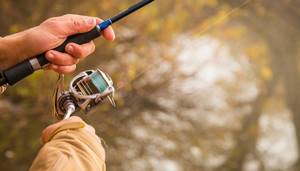
Uniform spinning retrieve is the best option for a beginner. It involves the simplest actions of the fisherman: uniformly winding the fishing line onto the spool at a constant speed. In this case, the spinning rod remains in the same position: the fisherman operates exclusively with a reel. The winding speed can be different, and the depth of immersion depends on this factor. The higher it is, the faster the bait comes to the surface. It is usually used when fishing in the middle and upper layers of water, which virtually eliminates the possibility of snags on a snagged bottom.
Despite the simplicity of execution, this method sometimes produces very high catchability. Moreover, some baits, for example, “spinners” with a core weight, demonstrate real play only with this method of execution. Other baits (spinners, wobblers with their own game, jigs) can be animated in both the above and other ways.
Uneven postings
Uniform wiring can easily be transformed into uneven wiring. The fishing line is reeled in with a change in speed, during which the bait either practically hangs in the water column, then sinks or floats, or accelerates. Its chaotic movements attract the predator. Sometimes blank movements are added, which makes the animation even less orderly, likening the bait to a wounded fish.
There are a great many options for uneven wiring, and it is difficult to predict which method will be most effective in this case. This is usually learned through experience. Uneven methods include jigging “steps”, twitching and other options - in general, everything that involves changing the speed of winding the reel and manipulating the rod.
"Steps"
This type involves the movement of the bait along an intricate vertical trajectory, reminiscent of a ladder. When casting, it falls to the bottom, after reeling in the line it floats up, and during a pause it sinks again. The work of the reel can be interspersed with the movement of the blank up (or up/to the side), which gives the bait a sharper action.
Traditionally, step wiring is associated with jigs, so we will talk about it in more detail below. However, in practice, it can also be used with other types of baits, for example, with oscillating spoons, wobblers of various types, cicadas, and so on (except for rotating spoons). In this case, it is desirable that the bait have its own animation even when falling, as this attracts the predator even more.
It is interesting that when “stepping”, floating wobblers behave in exactly the opposite way to jig and other sinking baits. When stopping, a reverse step is formed: the wobbler does not sink, but floats up. Fish often react to the bait precisely at the moment it surfaces. Many spinning anglers consider stepped retrieves with a floating wobbler to be the most effective against a passive predator.
Twitching
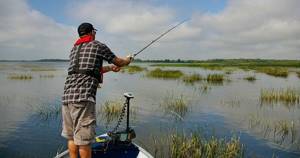
Twitching involves active work with the rod. This is a fairly energetic jerking drive, produced during active work with the blank. It is most often used to animate wobblers such as poppers and minnows, that is, narrow-bodied and propulsive baits. Pauses alternate with jerks and rewinding of the cord. The fisherman actively works with the rod, as a result of which the bait scours from side to side. For a predator, this looks like the movements of a weak, wounded fish, incapable of much resistance, and provokes an attack. At the moment, this is one of the most effective techniques for hunting predatory fish.
There are low-, medium- and high-amplitude twitching. In addition, this wiring can be varied in terms of hardness-softness, as well as the degree of randomness. For catching perch, low-amplitude twitching is usually used, but for hunting pike, wider, sweeping movements are suitable. Despite the variety of options, there is a single rule: the less active the predator, the softer the retrieve and the longer the pauses between jerks. For example, during the sluggish summer pike bite, “stop and go” works well - a method in which careful movements of the form are accompanied by winding the fishing line and alternate with pauses: 3-5 turns - a pause lasting the same number of seconds.
This wiring in all variations requires the use of a rigid spinning rod of short length, which allows maximum control over the movements of the wobbler or spinner. Monofilament is rarely used: it stretches in water and gives a large error factor during animation. The best option would be a braided cord that is practically not subject to stretching. At long distances, only braided wire is applicable.
Spinning rod length
For hunting pike and perch, spinning rods ranging in size from 1.8 to 2.7 m are used. Long spinning rods are suitable for coastal fishing. They allow you to make long casts, reaching fish standing at a distance.
Short spinning rods are used when fishing from boats. A short spinning rod is convenient when fishing from a boat, and long casts are not required here. Another area of application for short spinning rods is fishing from a shore covered with forest or bushes. With a short rod it is convenient to move among the thickets and make casts from under overhanging branches.
We invite you to familiarize yourself with: Do-it-yourself rubber bottom tackle. Fishing with an elastic band
Jig wiring
With the advent of silicone nozzles, the capabilities of spinning anglers have expanded significantly. Among them, the most popular are twisters and vibrotails (baits with jig heads), but fishermen also use this technique with other options, for example, foam rubber fish, known since Soviet times. Sometimes jigs are also used to catch peaceful fish, with passive silicone baits that imitate insects, worms, crustaceans, and so on. So, for example, a silicone worm can be used by bream, carp or crucian carp.
Jig fishing is highly effective year-round, but it is most productive in spring and autumn. However, in non-freezing reservoirs, jig lovers catch predators in winter - peaceful fish are inactive at this time.
This technique uses rods with different tests and action. The characteristics of a spinning rod are, for the most part, determined by the weight of the bait with the head, but other factors are also taken into account, for example, the strength of the current. At long distances, as in the previous case, the best option is a braided line; at short distances and with inactive fish, a monofilament line that is less noticeable in the water is the best option.
The essence of the classic jig is to give the bait a stepwise movement. The bait sinks to the bottom when casting, followed by a stage of reeling out the fishing line and a pause, during which the bait sinks deeper again. The vast majority of bites occur during the free fall stage, but sometimes the predator reacts to potential prey at other times.
Russian classics
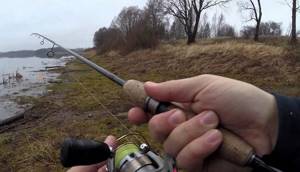
In this case, we are talking about the classic Russian step, perhaps the most common and universal wiring, suitable for “silicone” baits with jig heads. It is considered most effective in rivers, but can also be used in reservoirs with standing water. The predator responds best to it when fishing with the current, but when the fish are highly active, the opposite option is also applicable.
The classic spinning technique is as follows:
- After casting, the angler waits for the moment when the bait sinks to the bottom (often the attack follows precisely at this moment).
- When you touch the bottom, you should wind the reel a couple of turns, the bait will float up.
- There is a pause, during which the bait touches the bottom again.
Similar movements are repeated until the bait approaches the shore. In the classic version, the number of windings and the weight of the bait are selected in such a way that the average time of lowering the bait to the bottom, tempting for fish, is about 2-5 seconds with a step step of about 1-3 meters.
The slow version with pauses after the fall and short reels is effective in cold water and inactive fish. In conditions of a clean bottom, it can be supplemented with dragging, to which perch and pike perch respond especially well.
American version
If the classic method involves working exclusively with a reel, then the American version also uses a rod. This technique works best in still water, but some anglers use it productively in currents, especially when hunting walleye. Many spinning anglers value this wiring for its maximum sensitivity to the animation of the silicone: all its movements are instantly transmitted to the angler’s hand.
When the bait falls to the bottom, the angler smoothly pulls the rod towards himself, and then winds the reel to eliminate the slack. The next pull-up and jerk follows after the bait falls again. The step pitch in this case directly depends on the length of the spinning rod, so with short “American” rods it is almost impossible to do.
To be demolished
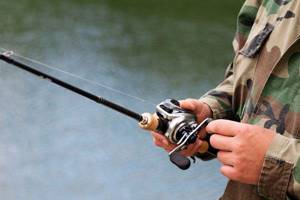
“Download” fishing is an interesting and productive fishing technique on rivers with a noticeable current, especially in cold water. In fact, it can be called a variation of the above-mentioned “American”, adapted to river conditions. This method requires certain skills and feel for the rod, so beginners are better off practicing with simpler options.
In this case, casting is usually carried out upstream. After the bait falls, the fisherman lifts it above the bottom by swinging the rod (without reeling), which allows it to float a meter or two downstream. Then the operation is repeated cyclically until the slack of the fishing line becomes critical. After this moment, the coil is wound and any of the techniques suitable for working against the current are used, for example, the same classic.
Pendulum
This method is used in difficult fishing conditions: the equipment in this case is subject to minimal risk of snagging. When fishing in snags, it is recommended to use a flat jig head: it is less “catchy” than a round one. If desired, the pendulum can also be operated with the flow, under demolition.
The pendulum diagram looks like this:
- At the beginning of the retrieve, immediately after the bait falls, the angler moves the spinning rod to a horizontal position and pulls it 10-15 cm.
- The bait rises above the bottom, after which the rod returns back 5-10 cm.
- It falls to the ground, the slack in the fishing line is taken out, and the form returns to the horizontal.
Aggressive wiring
As we already said above, the more active the fish, the sharper and faster the wiring should be. Therefore, the aggressive technique is only suitable for a hungry and active predator, for example, during the pre-spawning period. The object of hunting can be any representative of the predatory ichthyofauna: from trophy pike perch to small grass perch. The main rule: the fish must see the target well, so in poor lighting conditions and in muddy water, aggressive fishing is ineffective.
This technique is not too difficult to perform. It involves a sharp upward swing of the rod, like a hook, and then lowering it almost to the horizontal in combination with reeling in the fishing line. As a result of jerks, very short steps are formed.
Dotted line
We have before us another interesting technique, applicable to a passive predator: it works in the absence of a bite. True, for beginners who have just picked up a spinning rod, this wiring will seem overwhelming: it requires a unique sense of bait, which can only be developed with experience.
The use of this method is possible only with spaced equipment, for example, Carolina or Texas. Its essence is that the sinker periodically bounces above the bottom, while the bait practically does not come off from it - dragging occurs. This is ensured by small pulls of the form up or to the side with short pauses. In conditions of a stuck bottom, it can only be done in the water column, but it is even more difficult to perform.
Spinning fishing is one of the most adrenaline-pumping leisure activities. If you want to enjoy fighting with a worthy opponent and enviable trophies, join a huge army of spinners. We hope that our article will help you get at least a theoretical understanding of fishing techniques, and you can get the rest without any problems in practice!
Fishermen wonder why I’m biting and they’re not?
I’m revealing a secret just for you: it’s all about the miracle bait! More details

